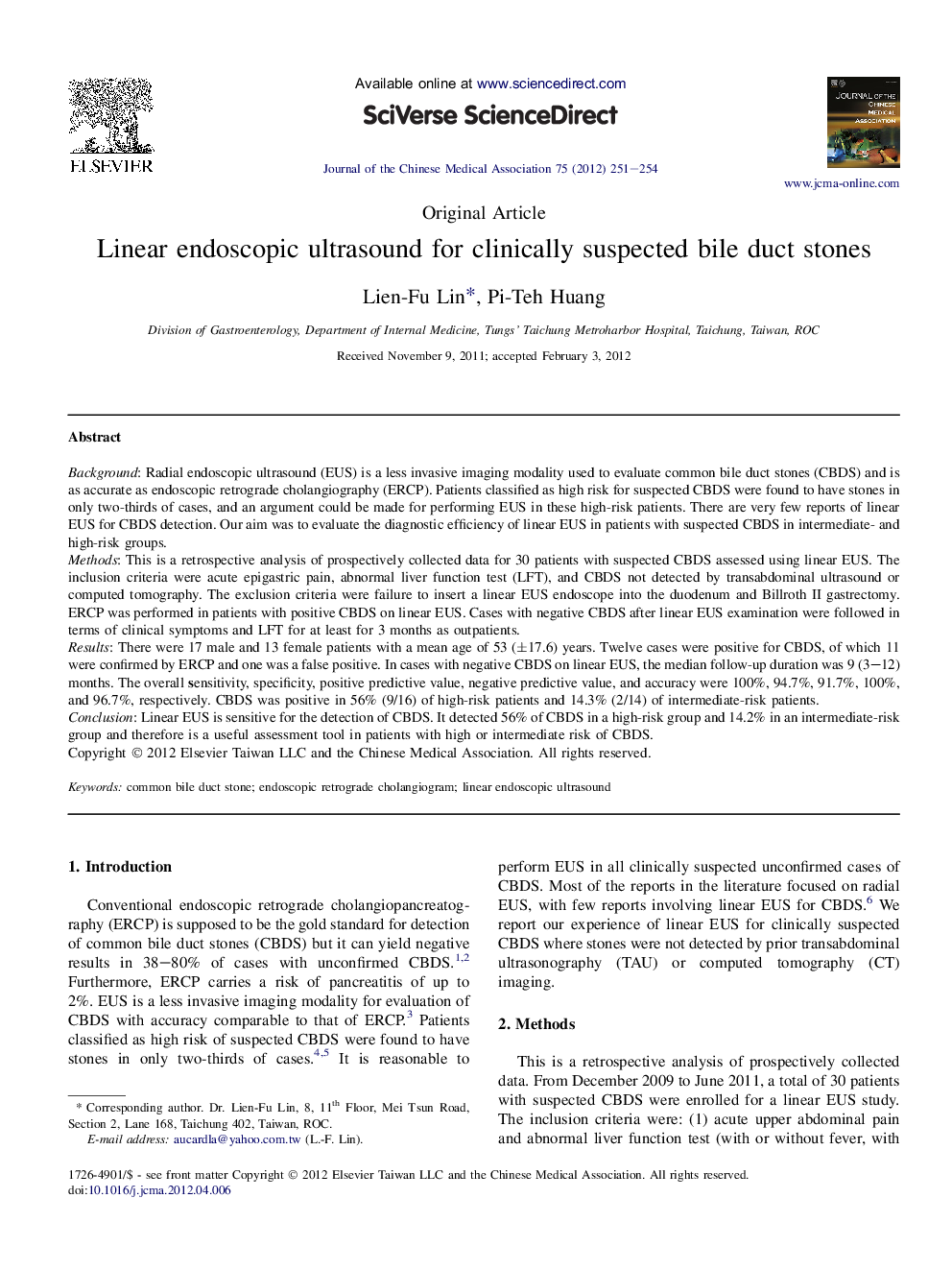| Article ID | Journal | Published Year | Pages | File Type |
|---|---|---|---|---|
| 3476837 | Journal of the Chinese Medical Association | 2012 | 4 Pages |
BackgroundRadial endoscopic ultrasound (EUS) is a less invasive imaging modality used to evaluate common bile duct stones (CBDS) and is as accurate as endoscopic retrograde cholangiography (ERCP). Patients classified as high risk for suspected CBDS were found to have stones in only two-thirds of cases, and an argument could be made for performing EUS in these high-risk patients. There are very few reports of linear EUS for CBDS detection. Our aim was to evaluate the diagnostic efficiency of linear EUS in patients with suspected CBDS in intermediate- and high-risk groups.MethodsThis is a retrospective analysis of prospectively collected data for 30 patients with suspected CBDS assessed using linear EUS. The inclusion criteria were acute epigastric pain, abnormal liver function test (LFT), and CBDS not detected by transabdominal ultrasound or computed tomography. The exclusion criteria were failure to insert a linear EUS endoscope into the duodenum and Billroth II gastrectomy. ERCP was performed in patients with positive CBDS on linear EUS. Cases with negative CBDS after linear EUS examination were followed in terms of clinical symptoms and LFT for at least for 3 months as outpatients.ResultsThere were 17 male and 13 female patients with a mean age of 53 (±17.6) years. Twelve cases were positive for CBDS, of which 11 were confirmed by ERCP and one was a false positive. In cases with negative CBDS on linear EUS, the median follow-up duration was 9 (3–12) months. The overall sensitivity, specificity, positive predictive value, negative predictive value, and accuracy were 100%, 94.7%, 91.7%, 100%, and 96.7%, respectively. CBDS was positive in 56% (9/16) of high-risk patients and 14.3% (2/14) of intermediate-risk patients.ConclusionLinear EUS is sensitive for the detection of CBDS. It detected 56% of CBDS in a high-risk group and 14.2% in an intermediate-risk group and therefore is a useful assessment tool in patients with high or intermediate risk of CBDS.
